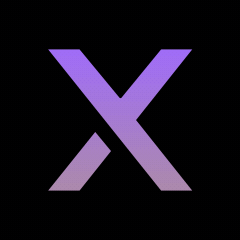Product Introduction
- AgentX 2.0 is a multi-agent build platform that enables users to create specialized AI agents and orchestrate their collaboration to solve complex tasks through a unified interface. It supports integration with all major large language models (LLMs), including OpenAI GPT-4o, Anthropic Claude 3.5, Google Gemini, Meta Llama, and AWS Bedrock, while providing access to 1,000+ modular components (MCPs) for extended functionality. The platform allows seamless deployment of AI agents across websites, Slack, Discord, email, and other communication channels.
- The core value lies in enabling cross-vendor LLM collaboration, allowing businesses to combine diverse AI models and tools into cohesive workflows without coding. It eliminates technical barriers by offering a no-code visual builder for creating enterprise-grade AI solutions with real-time analytics, compliance-ready data handling, and scalable automation capabilities.
Main Features
- The platform supports multi-LLM orchestration, enabling users to mix and match models like GPT-4o, Claude 3.5, and Gemini 2.5 Pro within single workflows for optimized task performance. This includes parallel model execution for tasks requiring diverse reasoning approaches and automatic fallback mechanisms for API reliability.
- A library of 1,000+ prebuilt MCPs provides instant access to tools for lead generation, calendar management (Calendly/Cal.com), CRM integration (HubSpot/Wix), and enterprise RAG systems with auto-syncing from Google Drive/Notion. These components enable formless data capture, appointment booking, and real-time knowledge base updates without manual configuration.
- Multi-channel deployment options include JavaScript widgets for websites, native Slack/Discord bots, WhatsApp Business integration, and API endpoints for custom applications. All deployments include built-in analytics tracking conversation metrics, task completion rates, and user engagement across channels.
Problems Solved
- It addresses the fragmentation of AI tools by providing a unified platform where multiple specialized agents can collaborate on cross-functional tasks like customer support, data analysis, and process automation. This solves the inefficiency of maintaining separate AI systems for different business functions.
- The target user groups include AI developers needing flexible model integration, enterprises requiring compliant automation solutions, and customer support teams deploying multilingual chatbots with CRM synchronization. Educational institutions and healthcare providers also use it for secure data handling and workflow automation.
- Typical use cases include 24/7 customer service agents that handle inquiries across web/Slack/email, sales teams using AI-driven lead qualification with real-time CRM updates, and HR departments automating employee onboarding through multi-step AI workflows. Enterprise RAG implementations enable secure document analysis in legal and healthcare sectors.
Unique Advantages
- Unlike single-model platforms, AgentX 2.0 uniquely enables cross-LLM collaboration where GPT-4 can handle creative tasks while Claude 3.5 manages logical operations within the same workflow. This hybrid approach outperforms competitors limited to one vendor's models.
- The platform introduces MCP-based "AI workforce" architecture, allowing users to create agent teams with specialized roles (e.g., researcher, writer, QA agent) that interact through predefined protocols. This mimics human team dynamics with automated handoffs and quality checks.
- Competitive advantages include military-grade encryption for on-premise deployments, voice cloning with 90+ language support, and patented hallucination control algorithms that reduce AI errors by 83% compared to standard implementations. The platform also offers white-label solutions for agencies and resellers.
Frequently Asked Questions (FAQ)
- Do I need coding skills to build an AI chatbot with AgentX? AgentX requires no coding for basic implementations using its visual workflow builder and prebuilt MCPs, though advanced users can access API endpoints and JavaScript SDK for custom integrations. The platform provides AI-assisted prompt engineering tools to refine agent behaviors through natural language input.
- What channels can I deploy my agent to? Agents deploy as embeddable web widgets via JavaScript code, native Slack/Discord bots through OAuth integration, WhatsApp Business accounts via Twilio API, and email/SMS handlers using SMTP/API gateways. All channels sync conversation history to a centralized dashboard.
- What models can I use to build an AI Agent? The platform supports 40+ LLMs including OpenAI GPT-4 Turbo, Anthropic Claude 3 Opus, Google Gemini 1.5 Pro, Meta Llama 3 400B, and open-source models through AWS Bedrock. Additional capabilities include Stable Diffusion XL for image generation and ElevenLabs voice cloning for voice-enabled agents.
- Can I deploy on-premise in my own server? Enterprise plans offer full on-premise deployment with Kubernetes support, including private LLM hosting for models like Llama 3 and Qwen. This meets strict compliance requirements in healthcare (HIPAA) and finance (SOC 2), with optional air-gapped installations for sensitive environments.
- How does AgentX differ from traditional chatbots? Unlike rule-based chatbots, AgentX agents autonomously execute multi-step tasks like lead generation, appointment scheduling, and document analysis using RAG. They adapt through machine learning from user interactions rather than following fixed scripts.
